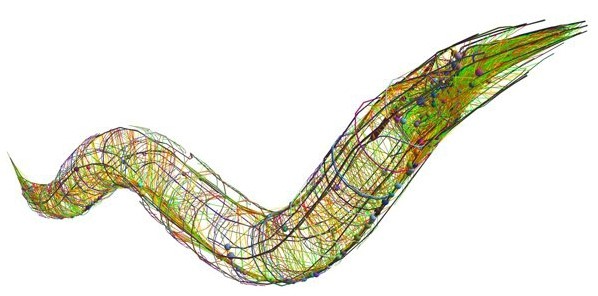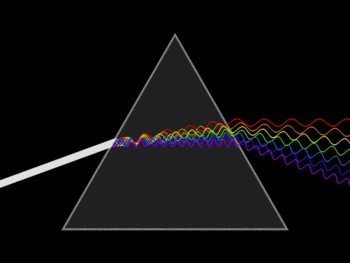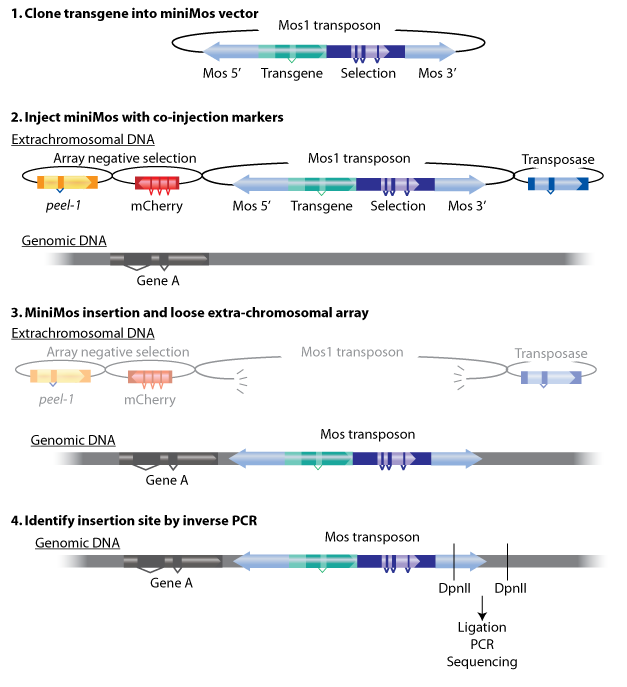Jol-Fengzi (Talk | contribs) |
Jol-Fengzi (Talk | contribs) |
||
| Line 10: | Line 10: | ||
------- | ------- | ||
| − | <html | + | <html><font size="5" face="Times"></html> |
The neuroscientific research of <i>C.elegans</i> reveals that in this nematode, a pair of olfactory neurons, AWA and AWB, affect their preference for different olfactory cues. Our project is based on these two neurons ,we aim to figure out the logic connection between the neuron network and the learning ability. | The neuroscientific research of <i>C.elegans</i> reveals that in this nematode, a pair of olfactory neurons, AWA and AWB, affect their preference for different olfactory cues. Our project is based on these two neurons ,we aim to figure out the logic connection between the neuron network and the learning ability. | ||
| Line 22: | Line 22: | ||
In practice, by making a plasmid containing original receptor’s promoter, channelrhodopsins, Ca2+ indicators and fluorescence proteins, the light-sensing receptors and other proteins can be expressed in <i>C.elegans</i>. Artificial introns are inserted in the genetic sequence of the plasmid, to enhance their expression inside the nematodes. For the sake of ensuring efficient concomitant and equivalent expression of more than two polypeptides from a single promoter, viral 2A peptides are used, which trigger a “ribosomal-skip” or “STOP&GO” mechanism during translation, to express multiple proteins from a single vector in <i>C.elegans</i> . | In practice, by making a plasmid containing original receptor’s promoter, channelrhodopsins, Ca2+ indicators and fluorescence proteins, the light-sensing receptors and other proteins can be expressed in <i>C.elegans</i>. Artificial introns are inserted in the genetic sequence of the plasmid, to enhance their expression inside the nematodes. For the sake of ensuring efficient concomitant and equivalent expression of more than two polypeptides from a single promoter, viral 2A peptides are used, which trigger a “ribosomal-skip” or “STOP&GO” mechanism during translation, to express multiple proteins from a single vector in <i>C.elegans</i> . | ||
| − | <html></font | + | <html></font></html> |
<html> | <html> | ||
Revision as of 10:19, 29 October 2017
Design
Project
The neuroscientific research of C.elegans reveals that in this nematode, a pair of olfactory neurons, AWA and AWB, affect their preference for different olfactory cues. Our project is based on these two neurons ,we aim to figure out the logic connection between the neuron network and the learning ability.
The first thing is to figure how the olfactory neurons affected behavior change. To realize this purpose, we applied two hypothesis: the neurons are equivalent with different types of receptors; even same each olfactory neuron might be dedicated to a characteristic response despite the receptors it expresses. These hypothesis were supported by the experiments done by other scientists, the experiment showed that use a promoter that express in one of the pair of neurons we can transfer an exogenous receptor onto the neuron, and the transferred receptor will lead to avoidance (AWB) or preference (AWA). That is to say, if the stimulations are not sensed by other receptors, we can control the preference of them towards different stimulations by changing different receptors on these two neurons.Because of these ,we can apply our receptor to these two neurons to get our purpose.
Next, we need to construct a system inside the worms which can induce them show specific response to the inducing signal.Then we can induce them form the learning behavior.Meanwhile, the former research of learning ability based on C.elegans were more focused on chemical signals like olfactory inducing, heavy mental stimulus. These can demonstrate the existence of the learning behaviors but seems tenable as the reliable experimental data, since the residue of the stimuli are hard to erase. Thus we choose optogenetic method to realize this goal.
To study the nematodes’ behavior with optogenetic method, a pair of channelrhodopsins, the red-light sensitive Chrimson and the blue-light sensitive CoChR, are applied in our study. The channelrhodopsins intensely used in previous research, ChR2 and C1V1, have large overlap which indicates the large risk of cross-activation . CoChR is chosen because it is five times more sensitive to blue light than the commonly used ChR2, so low blue light intensities can be used without producing cross-activation of Chrimson.These two channelrhodopsins are sensitive to light of certain wavelength(Blue stimuli corresponded to ~400- to 520-nm band and the red stimuli to ~600- to 725-nm band).
In order to express the functional components in specific neurons (Pairs of olfactory neurons: AWA and AWB in our project ), we use the promoter of ODR-10, which is a protein specifically expressed in AWA and Str-1 (promoter of a protein specifically expressed in AWB ) respectively in AWA and AWB. The reason why the promoter from cell-specific protein enables expression of target components is demonstrated by the published paper. Thus if we express the channelrhodopsin in specific cells of organisms and shed specific light, we are capable of activating or suppressing the specific ion channel to manipulate the condition of the target cell.
In practice, by making a plasmid containing original receptor’s promoter, channelrhodopsins, Ca2+ indicators and fluorescence proteins, the light-sensing receptors and other proteins can be expressed in C.elegans. Artificial introns are inserted in the genetic sequence of the plasmid, to enhance their expression inside the nematodes. For the sake of ensuring efficient concomitant and equivalent expression of more than two polypeptides from a single promoter, viral 2A peptides are used, which trigger a “ribosomal-skip” or “STOP&GO” mechanism during translation, to express multiple proteins from a single vector in C.elegans .
Caenorhabditis elegans, a classic model organism, is widely used in scientific researches. In our project, we also choose it because its whole genome has been sequenced, and it has its own connectome(neuronal ‘wiring diagram’) completed by 2012 [1][2]. Adault C.elegans is about 1mm in length, 45μm in width and it is easily to observe and manipulate under stereomicroscope[3][4]. What's more, C.elegans has fixed ‘genetically determined number of cells’[5].These characteristics are of great help to accomplish our project.
Compared with other model organisms like Mus musculus, which needs approximately two to three months to mature, C.elegans possesses shorter life span. A self-fertilizing hermaphrodite can maintain its genetic information and live for two to three weeks[6]. Meanwhile, worms can also propagate sexually to get genetic recombination offsprings.
References
- ↑ Caenorhabditis elegans(WIKIPEDIA). Retrieved September 25, 2017 https://en.wikipedia.org/wiki/Caenorhabditis_elegans
- ↑ Brenner, S., Draft, A. N. C., Chklovskii, D., System, F. F. N., Brain, T. M., & Seung, S., et al. . The connectome debate: is mapping the mind of a worm worth it?. Scientific American
- ↑ [1]Caenorhabditis elegans(WIKIPEDIA). Retrieved September 25, 2017 https://en.wikipedia.org/wiki/Caenorhabditis_elegans
- ↑ Chen, Y., Scarcelli, V., & Legouis, R. (2017). Approaches for studying autophagy in caenorhabditis elegans. Cells 6(3)
- ↑ [1]Caenorhabditis elegans(WIKIPEDIA). Retrieved September 25, 2017 https://en.wikipedia.org/wiki/Caenorhabditis_elegans
- ↑ [4]Uno, M., & Nishida, E. (2016). Lifespan-regulating genes in C. elegans. , 2, 16010.
- ↑ [1]R.Carlson, Neil (2009). Psychology-the science of behavior. U.S: Pearson Education Canada; 4th edition. p. 207. ISBN 978-0-205-64524-4.
- ↑ [2]Krebs, John R.(1983). "Animal behaviour: From Skinner box to the field". Nature. 304 (5922): 117. Bibcode:1983Natur.304..117K. PMID 6866102. doi:10.1038/304117a0
- ↑ Brembs, Björn. "Operant conditioning in invertebrates". Current Opinion in Neurobiology. 13 (6): 710–717. doi:10.1016/j.conb.2003.10.002
- ↑ [1] Editorial, N. (2011). Method of the year 2010. Nature Methods.
- ↑ [1] Chung, K., et al. (2008). ”Automated on-chip rapid microscopy, phenotyping and sorting of C. elegans.” Nature Methods 5(7): 637-643.




